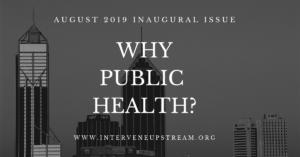(Or, how to work with animals and get paid for it)
First Exposure
My first exposure to veterinary medicine as a public health discipline was while working in a high-volume spay and neuter clinic. There, I saw hundreds of feral cats come through our trap-neuter-return (TNR) program and be released back to their homes. And there, I was introduced to an ongoing debate: the question of TNR vs. catch and kill.
There are many reasons that this debate is not settled, among them concerns about feral cats as vectors for diseases of human or wildlife impact, the ethical implications of TNR and of catch/kill programs, the “vacuum” effect created by catch/kill programs and the many roles (both positive and negative) that cat colonies can play in their communities.
The clinic environment was very pro-TNR; during my time working at that clinic, my boss was also constantly working with our local officials to get a TNR ordinance passed in our county. But even after having worked there, I can still understand the arguments against TNR. For every group of feral cats we spayed or neutered, there was a group of humans working to keep them healthy in their home territory – and many of those humans regarded the cats as companions, albeit not in the traditional sense. For every person concerned about getting rabies from a feral cat, there were others explaining that feral cats don’t usually approach people and are far less likely to have and transmit rabies than a bat, skunk, fox or raccoon.
But this story is not meant to discuss TNR or to take a side. I bring this issue up because TNR provides a good example of applying veterinary medicine to public health questions. It encompasses medicine, questions of infectious disease transmission, ethical and ecological dilemmas and the sometimes-frustrating path to policy approval. The challenge of treating health problems in felines who couldn’t be handled without sedation was a novel one for me, as was the difficulty of trying to get legislation passed at the local level to effect change that would help further TNR in our community.
Ultimately, my experience at that clinic changed my life in more ways than one. In addition to setting me on the path to veterinary school, it exposed me to a very concrete and easily overlooked example of the intricate relationship that humans have with the animal populations around them. Exposure to the shelter environment and complex conversations around TNR instilled in me a deep appreciation and passion for the interrelatedness of our human and veterinary worlds, planting a seed that has since grown into my interest in veterinary public health.
Veterinarians, the Unsung Heroes of Public Health

Lt. Cmdr. Gregg Langham, a US Public Health Service veterinarian attached to Military Sealift Command hospital ship USNS Comfort (T-AH 20), injects cattle with anti-parasite vaccination at the Dos Potrillos Ranch. Comfort is on a four-month humanitarian deployment to Latin America and the Caribbean to provide medical treatment to patients in a dozen countries. Image and caption from Wikimedia Commons.
The role that veterinarians play in public health is an unsung but critical part of human and animal health. Veterinarians promote and protect public health by guarding the health of companion, agricultural and research animals. Public health victories in veterinary medicine come from promoting preventive health care among companion animals, educating the public about zoonotic diseases, contributing to the safety of our food supply, working to assure the safety and validity of toxicological, pharmacological and medical device research – and of course, by treating sick animals across disciplines.
As future public health professionals, you are likely to encounter veterinarians in many roles outside of caring for your Fluffy or Fido. They may work with you as epidemiologists, field infectious disease control specialists, food inspectors, relief workers following natural disasters, researchers examining the effect of changing vector ranges, agricultural specialists working to increase the health and efficiency of food animal populations in impoverished areas of the world, policymakers or lobbyists improving public health infrastructures, forensic specialists helping to shed light on animal abuse, biologists developing new vaccines and/or other pharmaceuticals or in any number of other crucial public health functions.
The growing expanse of veterinary medicine is in part due to globalization, which is amplifying veterinary medicine forward as a crucial component of societal well-being. In fact, the field of public health has already begun to recognize the importance of veterinary medicine in overall global health. One example of this is the One Health Initiative, which brings together professionals in human health, animal health and environmental health disciplines to collaborate with the goal of improving health. Improving our well-being and health requires a broad understanding that physical, emotional, mental and societal health is impacted by the animals (that veterinarians serve!) from companion animals to beef cattle. Healthy animals are fundamental to the health of our planet and ourselves.
The Growing Opportunities in Veterinary Public Health
It should come as no surprise then that the number of public health opportunities involving animals are exponentially increasing – after all, the realms of animal care, medicine, husbandry and welfare increasingly overlap the world of public health. These careers come in many forms, including jobs in education, policy, medicine, research and epidemiology. Just to name a few: Health educators and community health workers are experiencing job growth as high as 16%1, epidemiologist employment is projected to grow by 9% (national average) from 2016 to 20262, and medical and health services manager employment is projected to grow by 20%.3 While largely a role that we think of in human hospitals, such personnel are vital for veterinary hospitals as well.4
That being said, as an aspiring public health professional, there already exist many ways to shape your career to include work with animals. Pursuing experiences with the United States Department of Agriculture Food Safety and Inspection Service may be worthwhile for those who are interested in securing the food supply of the nation, while those more interested in internationally may look toward the USDA Animal and Plant Health Inspection Services, which regulates the entry of animals into the country, including food imports to tourists that bring along their pets. The Centers for Disease Control has many opportunities for involvement in infectious disease control and epidemiological work such as understanding animal populations as vectors and sources of zoonotic infection. Specifically, the Epidemic Intelligence Service (EIS) at the CDC has sent graduates on to perform research on vaccines, Zika transmission, histoplasmosis outbreaks, Parkinson’s disease, public health responses to humanitarian crises and much more.5
Opportunities also exist on smaller scales. Public health employees at the state level work closely with state public health veterinarians to monitor and control diseases like rabies. Outside of government, public health professions can monitor, promote and improve the health of wildlife, agricultural and shelter populations of animals. Large veterinary corporations like Zoetis, Petsmart and Royal Canin employ public health staff to interpret trends in companion animal health and welfare. Research facilities like Charles River Laboratories6 employ population health specialists to augment their veterinary teams in monitoring research or conservation populations. Shelter operations ranging in size from the massive Best Friends7 sanctuary to your local shelter also have a need for people who can work to ensure and promote healthy conditions for their population of animals. Not to mention there is an omnipresent need for outreach and education officers to communicate the importance of veterinary medicine and public health.
This all goes to say that, from research to government, public health professionals interested in animal-related work perform invaluable work to improve the health of animals and people, and that you can certainly share your passion for public health alongside your love for animals. Yes, you can have it both ways.
Finding Your Role in Global Health

Image from Wikipedia Commons.
If all this animal talk got you interested, I’d encourage you to check out the One Health opportunities bulletin board on the One Health Commission’s website for educational, postdoc, grant, scholarship and job opportunities,8 the Standing Committee on One Health’s facebook page for networking, journals, and student competitions,9 government organizations like the CDC, Food Safety Inspection Services (FSIS), and the Public Health Services (PHS)’s websites for job and educational opportunities,1011 as well as private companies’ websites.
While I came to an interest in public health through veterinary medicine, as a public health professional you may find yourself integrating your practice with veterinary medicine, whether by chance, by love for animals or by love for global health. Regardless of where your journey takes you, I encourage you to consider working with animals, if anything at least for a short exposure. Finding a public health career incorporating veterinary medicine is definitely something you can do if you’re interested in it, and requires only desire, some research to find the right opportunities and most importantly, pursuing options in the field to make it possible.
- Hobbies and graduate student life: Not inherently incompatible - January 14, 2020
- The Intersection of Veterinary Medicine and Public Health - August 21, 2019
- Health Educators and Community Health Workers : Occupational Outlook Handbook: : U.S. Bureau of Labor Statistics. https://www.bls.gov/ooh/community-and-social-service/health-educators.htm. Accessed 16 Aug. 2019. [↩]
- Epidemiologists : Occupational Outlook Handbook: : U.S. Bureau of Labor Statistics. https://www.bls.gov/ooh/life-physical-and-social-science/epidemiologists.htm. Accessed 16 Aug. 2019. [↩]
- Medical and Health Services Managers : Occupational Outlook Handbook: : U.S. Bureau of Labor Statistics. https://www.bls.gov/ooh/management/medical-and-health-services-managers.htm. Accessed 16 Aug. 2019. [↩]
- Careers in Management – Veterinary Hospital Managers Association. https://www.vhma.org/page/Careers. Accessed 16 Aug. 2019. [↩]
- EIS Class of 2018 | Who We Are | Epidemic Intelligence Service | CDC. 30 Nov. 2018, https://www.cdc.gov/eis/who-we-are/class-of-2018.html. [↩]
- Charles River Laboratories | Every Step of the Way. https://www.criver.com/. Accessed 17 Aug. 2019. [↩]
- “The Sanctuary.” Best Friends Animal Society, 29 May 2015, https://bestfriends.org/sanctuary. [↩]
- OH OPPORTUNITIES BULLETIN BOARD – One Health Commission. https://www.onehealthcommission.org/en/resources__services/oh_opportunities_bulletin_board/. Accessed 14 Aug. 2019. [↩]
- Standing Committee on One Health, SCOH – Home. https://www.facebook.com/thescoh/. Accessed 14 Aug. 2019. [↩]
- Careers at CDC. https://jobs.cdc.gov/. Accessed 14 Aug. 2019. [↩]
- Careers. https://www.fsis.usda.gov/wps/portal/fsis/topics/careers. Accessed 14 Aug. 2019. [↩]





Pingback: Introducing Intervene Upstream: 2019 Inaugural Release » Intervene Upstream, the online peer-reviewed public health publication for graduate students